Today I had the awesome opportunity to explore the CIRS building on campus (the Centre for Interactive Research on Sustainability). I walk by the building often, and am often curious about it. My twin sister, who studies architecture in Oregon, actually studied the CIRS building through her classes, so I knew it was pretty famous! I did a Green Building Tour with Paula, and got to learn more about what makes this building so special and sustainable.
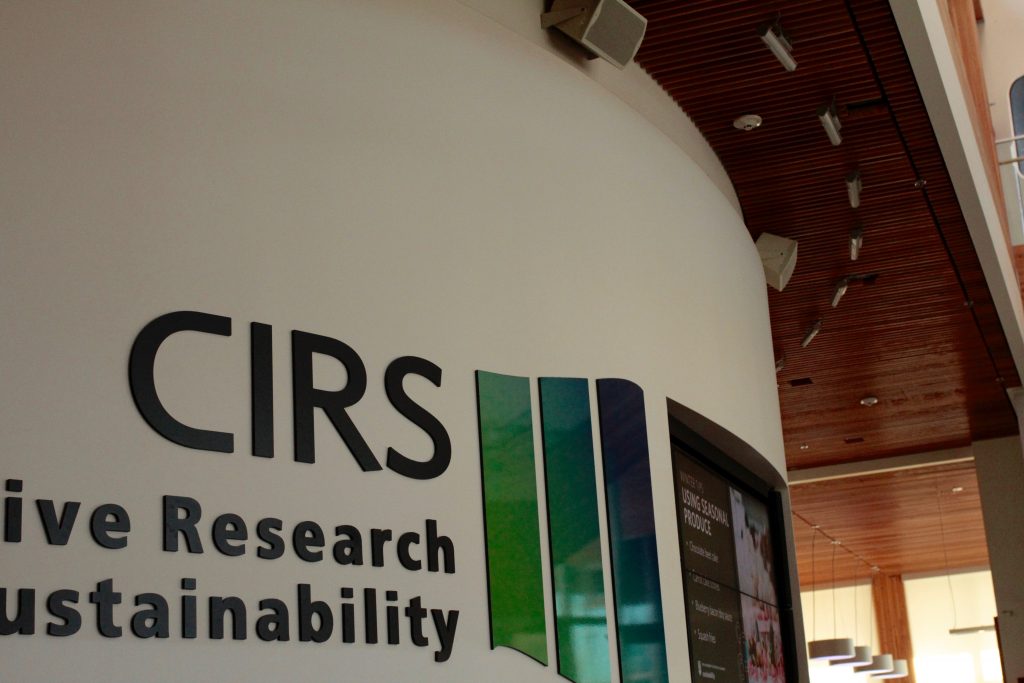
We started in the atrium, and talked about some of the noticeable differences between CIRS and other on-campus buildings. One of the first differences I noticed was all of the natural light throughout the building. In order to use more natural light and reduce the building’s use of artificial light, giant windows (with two layers of glass to support insulation) fill one of the walls of CIRS. Speaking of windows- many of these windows have been painted in order to reduce bird collisions on campus (the second highest reason for bird deaths in the area, behind cats). A PHD student designed this as a solution to the major bird collision issue on campus (approximately 10,000 birds die each year at UBC from collisions with reflective surfaces!)

The wood in CIRS is also pretty cool- it’s called Glulam wood– which means it has been glued and laminated in order to ensure that it is structurally strong. This kind of wood is used in other buildings on campus- like Orchard Commons and Tallwood! Wood is also a local resource- there is so much of it in BC- so it makes sense that buildings at UBC prioritize the use of wood.
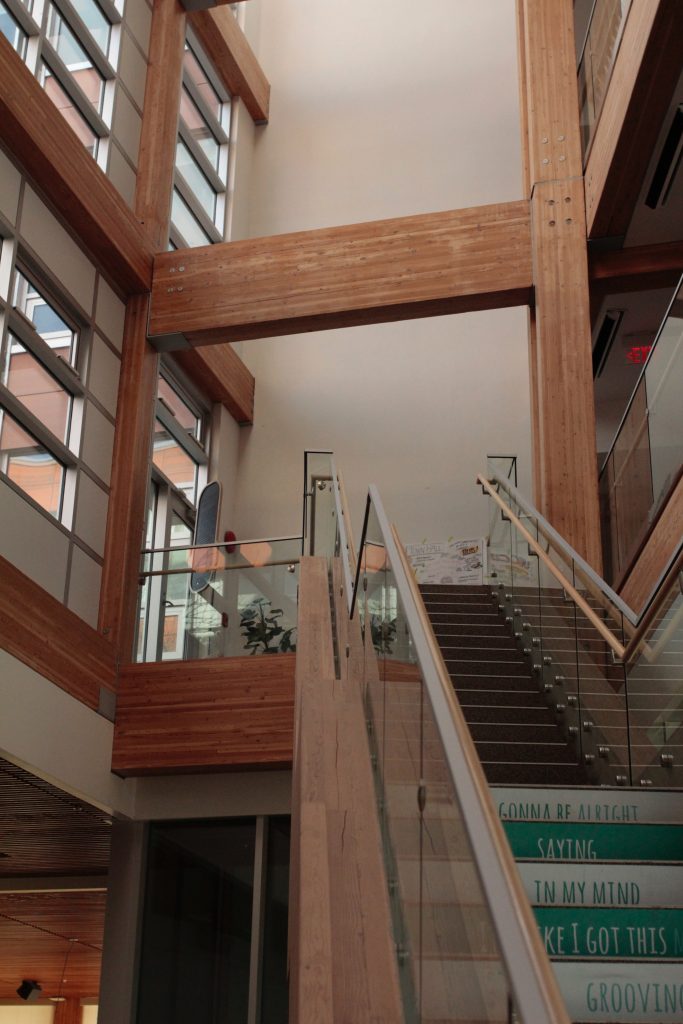
It takes less energy to produce wood than concrete, for example, and typically doesn’t need to travel as far as other materials that are typically used in building structures. Another cool thing to note is the wood on the ceilings- which is not structural, but is decorative in the space. This wood in the building is wood from trees that have been affected from the Pine Beetle- meaning they are from dryer trees that often contribute to summer fires in British Columbia. I didn’t know much about Pine Beetles so I looked them up- they have affected the health of more than 18.5 million hectares of BC forests and can’t be used as easily for structural wood pieces. What a yikes- I was surprised I hadn’t heard much about these beetles before.
Another cool thing you may notice about the atrium is the floor- the floor is made from a mix of rubber (reused from car tires) and recycled plastics. The floor is light to help reflect the natural lighting in the space (thanks to the plastics!) The mix of rubber and plastics also means that the floor is quiet as you move through it, and doesn’t create as much noise as it might otherwise. A photo of the floor is below! 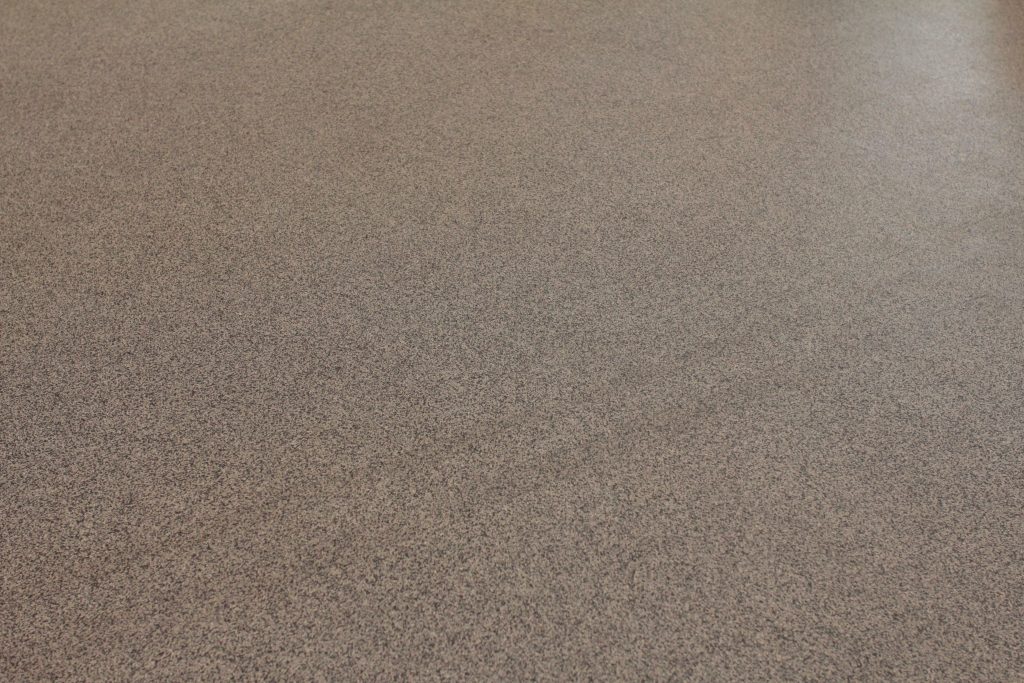
Next we got to head up to the green roof- where there are a few cool projects going on! There are pollinator homes for bees, butterflies, and bats made out of recycled materials (and designed by students in the school of architecture!) This pictured structure is actually made out of paper pulp from coffee cups.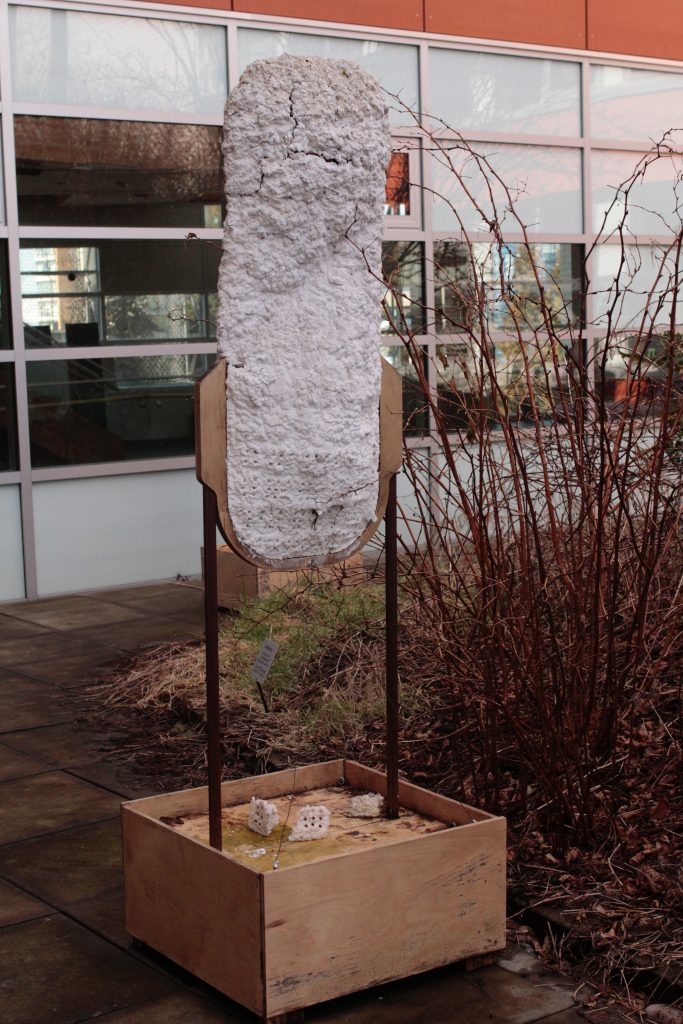
I could probably go on for a while about all the fun facts Paula shared with me about the building- but the last one I’ll point out is the thing you may notice most often when you walk by- the vines outside the building! These vines cover most of the west-facing side of the building. These windows get a lot of light in the summer, and the vines act as a way to “curtain” the windows and provide shade in the summer. In the winter, they lose their leaves, which means the vines don’t prevent light from entering the building. The vines are Chocolate Vines (yum?) and were chosen because of how they climb quickly and change based on the season. I thought this was an amazing, thoughtful design element- and it makes so much sense. My main window in my room faces West, and it often gets so warm in the summer- I wish I had viney windows!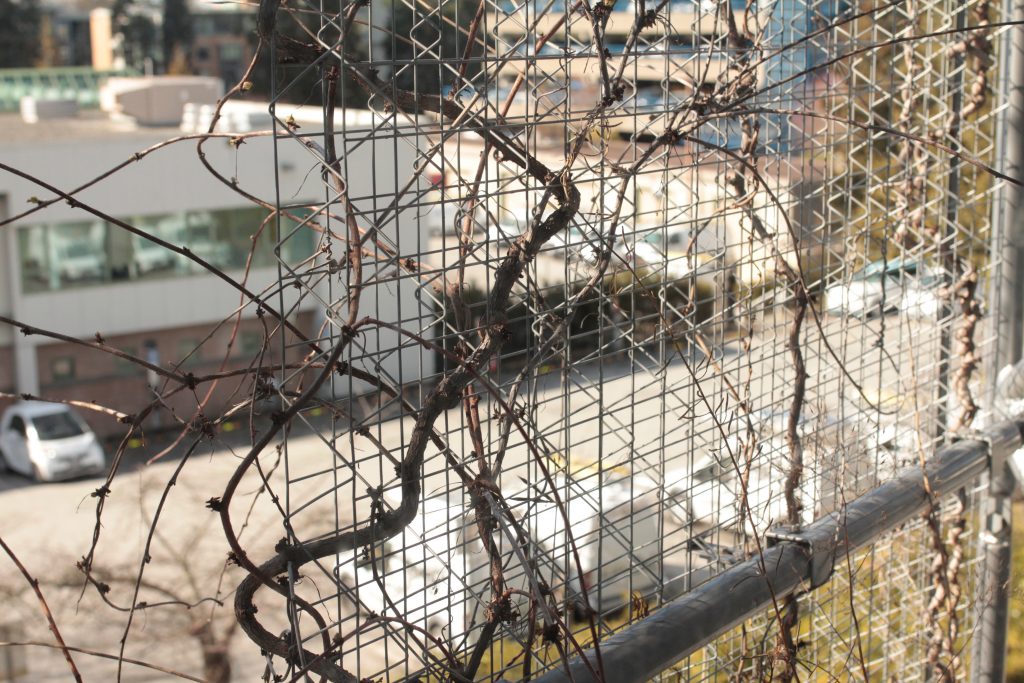
I think it’s incredible that CIRS and lots of other architecture superstar sustainability buildings are right here on UBC’s campus, and feel so grateful that I got to learn more about one I see often.
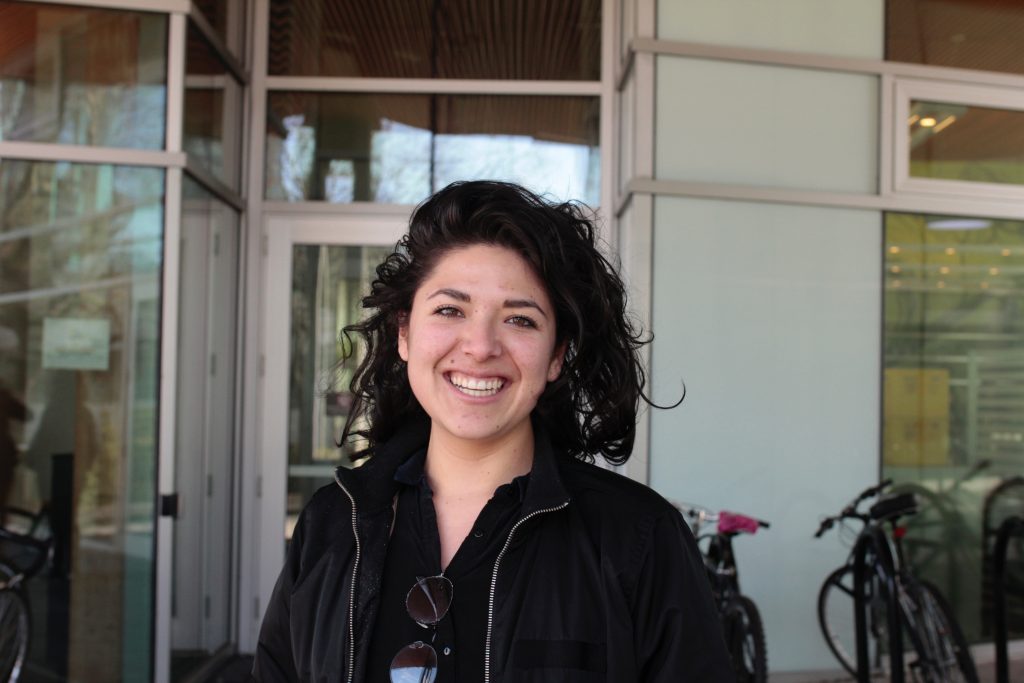
Big thanks to Paula for showing me around! Paula gives these tours often, and is studying Environmental Design at UBC- so hopefully someday soon she’ll be designing spaces and buildings as impressive as CIRS!
Hi Maddy, great post! I really enjoyed reading it and the fact of it to be accompanied with pictures makes it even better, as you see all the materials used and how what you wrote about actually is. To be honest, I would like to visit the building so I might drop by before leaving UBC. Buildings like CIRS are the perfect example of how design and sustainability fit together perfectly. Hopefully, more sustainable buildings are built in the future so we can reduce our carbon footprint!
Hi Maddy,
I’m surprised that this building encompasses so many sustainability features because I took a class in this building a year ago and I wasn’t aware of these things you mentioned at all. I love this building because of its modern looking outside and all the green features inside. However, I remember that I was bothered with the dim lighting it provided when I was taking a class over there, and now I understand the reason why. I’m wondering if it is possible for the building to install solar panels or other renewable resources that can generate electricity so that students’ studying experience in that building could be enhanced.
Hey Maddy!
After reading your blog post, I definitely need to take a campus tour of the CIRS building for myself! If it wasn’t for COMM 484 and your blog post, I definitely would have walked past this building thinking it was just like any other building. The first time I walked past the CIRS building in first year of university, I just noticed the green wall, but didn’t think much about it. The architect and the team behind the CIRS building really seemed to have thought just about everything to make the building as sustainable and innovative as possible. It is so cool that we go to an institution with people that have so much passion towards making change in their environment. Thanks for sharing so many cool facts about the CIRS building! I can’t wait to take a tour for myself to see all of it’s magnificient glory!
– Kevin
Thank you for investigating about CIRS! This building is such an epicentre of UBC’s sustainability initiative, why we don’t know more about it? I love the aspects of design that are particularly adopted from concepts of biomimicry such as the lights and window shades. It’s fascinating how design is coming back full circle to nature, like the business model itself. I’m curious about what will happen next once all the buildings have matched the standards of sustainability. How can we push further beyond design once we’ve mastered biomimicry? On the other hand, what are the unintended consequences of doing so?
Maddy! This was such a great post! I loved learning about all the sustainable designs thoughtfully incorporated into the CIRS building, which all seemed like simple, innovative ways to reduce energy consumption and recycle materials. I can’t wait to see it for myself one of these days 🙂